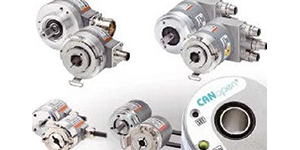Developed for Tough Industrial Environments
 The choice of the adapted measuring system should not be based simply on a few technical features found on the data sheet, but rather on good knowledge about the construction of the products and the areas of application they have been developed for. The Engineers of the Kubler Group provide assistance; they explain details and make the choice of position and motion sensors easier.
The choice of the adapted measuring system should not be based simply on a few technical features found on the data sheet, but rather on good knowledge about the construction of the products and the areas of application they have been developed for. The Engineers of the Kubler Group provide assistance; they explain details and make the choice of position and motion sensors easier.
Position and motion need to be measured with accuracy in almost every automation task. Basically, depending on the application, every sensor solution has advantages and drawbacks. And, since the sensors must always be located close to the action, they must be able to withstand particular environmental conditions and mechanical stresses. Therefore, the choice should be based on the following questions:
-Which measuring accuracy do I need?
-How fast and how frequently do I need the measured values?
-Which communication interfaces are available on the used control?
-In which environmental conditions - e.g. temperature and humidity - do the measurements take place?
-What is the available mounting space?
-Should particular stresses be expected, e.g. impacts/shocks, vibrations or magnetic interference fields?
All these criteria ultimately determine which technology suits best for the application, in order to achieve reliably accurate measurements.
Encoders
Two encoder scanning technologies established themselves in the industrial environment: optical and magnetic. The optical scanning offers very high resolutions and accuracies, as well as an outstanding resistance against electromagnetic or magnetic interferences.
On the other hand, the magnetic alternative is shock-resistant and offers high protection levels, up to IP69K. In addition, these devices are compact and suit also in case of high temperature fluctuations. Magnetic encoders are often less expensive, but offer lower resolutions and less accuracy than optical encoders. Kubler offers both technologies for all encoder categories (incremental, absolute singleturn and multiturn, and analogue). This way, our modular system allows basically selecting the best suitable technology for every application.
For encoders, technical features such as the protection level (IP value), the temperature range, the shock and vibration resistance or the permissible shaft load are particularly important selection criteria - but only these are not sufficient to make sure that the encoder really will reach a long service life. Considering encoders used outdoors, these must ensure IP67 and withstand temperatures up to 40°C. But is this sufficient? Very often, in outdoor applications, encoders are exposed to direct sunlight and therefore subjected to successive regular heating and cooling cycles, which can lead to the condensation of water inside of the encoder housing.
This can be prevented with a particularly robust and compact die-cast housing and the multiple sealing between the encoder flange and the housing, as is the case with Kubler's solid shaft encoders. And variable wall thicknesses make sure there is no weak point, ensuring for example that screws always are screwed in solid material - there are no through holes that might lead later to weak points. Furthermore, the compactness of the encoders creates a minimum of air volumes, which reduces notably the possible condensation effects.

